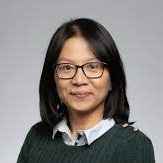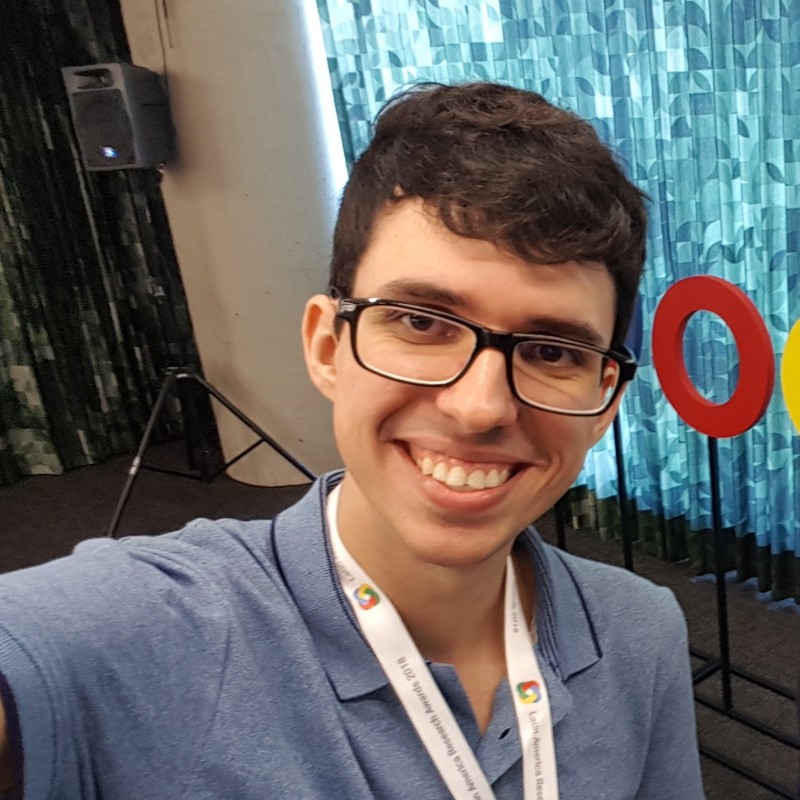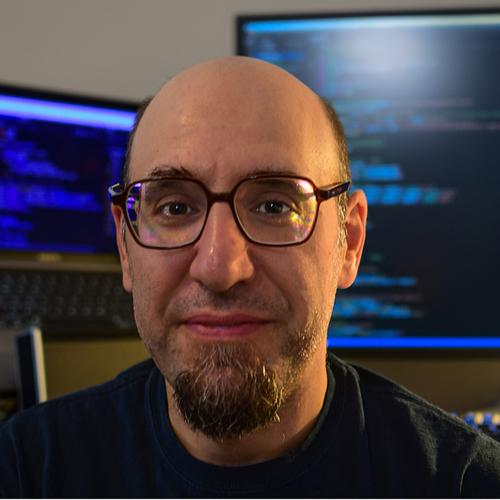[ Introduction | Invited Speakers | Important Dates | Paper Submission | Datasets | Program Schedule | Organizers ]
10/27/2024: Awardee information added10/09/2024: Slides uploaded
09/20/2024: Location updated
08/23/2024: Datasets updated
08/21/2024: Program Schedule finalized
08/17/2024: Program Schedule updated
08/08/2024: Program Schedule announced
07/02/2024: Program Committee updated
06/29/2024: Program Committee updated
06/14/2024: Program Committee updated
04/29/2024: Important Dates updated
04/04/2024: Datasets updated
03/31/2024: Website launched
Ninth
ISIC Skin Image Analysis Workshop
@ MICCAI 2024
Hosted by the International Skin Imaging Collaboration (ISIC)
Introduction
Skin is the largest organ of the human body, and is the first area of a patient assessed by clinical staff. The skin delivers numerous insights into a patient’s underlying health: for example, pale or blue skin suggests respiratory issues, unusually yellowish skin can signal hepatic issues, or certain rashes can be indicative of autoimmune issues. In addition, dermatological complaints are also among the most prevalent in primary care (Lowell et al., 2001). Images of the skin are the most easily captured form of medical image in healthcare, and the domain shares qualities to standard computer vision datasets, serving as a natural bridge between standard computer vision tasks and medical applications. However, significant and unique challenges still exist in this domain. For example, there is remarkable visual similarity across disease conditions, and compared to other medical imaging domains, varying genetics, disease states, imaging equipment, and imaging conditions can significantly change the appearance of the skin, making localization and classification in this domain unsolved tasks.
This workshop will serve as a venue to facilitate advancements and knowledge dissemination in the field of skin image analysis, raising awareness and interest for these socially valuable tasks. Invited speakers include major influencers in computer vision and skin imaging, and authors of accepted papers.
Lowell et al. “Dermatology in Primary Care: Prevalence and Patient Disposition,” Journal of the American Academy of Dermatology, vol. 45, no. 2, pp. 250–255, 2001.
Topics of interest include:
- Computer Vision in Dermatology and Primary Care
- Few-Shot Learning for Dermatological Conditions
- Skin Analysis from Dermoscopic Images
- Skin Analysis from Clinical Photographs
- Skin Analysis from Video
- Skin Analysis from Total-Body Photography and 3D Skin Reconstructions
- Skin Analysis from Confocal Microscopy
- Skin Analysis from Optical Coherence Tomography (OCT)
- Skin Analysis from Histopathological Images
- Skin Analysis from ex-vivo and Fluorescence Microscopy
- Skin Analysis from Multi-Modal Data Sources
- Explainable Artificial Intelligence (XAI) Related to Skin Image Analysis
- Algorithms to Mitigate Class Imbalance
- Uncertainty Estimation Related to Skin Image Analysis
- Human-Computer Interaction & Application Workflows for Skin Image Analysis
- Robustness to Bias from Clinical and User-Originating Photography
- Assessing and Creating Fairness of Skin Analysis in Underrepresented Groups
- Combined Application of Image Analysis and Large Language Models/Natural Language Processing (e.g., applied to EHR)
- Skin Cancer Prognosis and/or Risk Stratification Using Skin
Imaging Data
- Best Paper Award
- Honorable Mention Award
Invited Speakers
The workshop will feature several prominent names in the field of skin image analysis, including:
 |
Moi Hoon Yap is Professor of Image and Vision Computing and the lead of Human-Centred Computing at The Manchester Metropolitan University. She is leading research in computer vision and deep learning techniques for medical image analysis and facial analysis. Moi Hoon has received research funding from The Royal Society, EU Funding, EPSRC, Innovate UK, Cancer Research UK and industry partners. She serves as the Associate Editor of the Journal of Computers and Programs in Biomedicine and panel member of UK funding bodies. She is leading the technology development for diabetic foot ulcer tools, created novel datasets for reproducible research and conducted international challenges. |
 |
Alceu Bissoto earned his Ph.D. in Computer Science from the University of Campinas, Brazil, in 2024. His research in skin lesion analysis encompassed synthesis, segmentation, and classification, ultimately focusing on evaluating biases and enhancing robustness to distribution shifts. This focus has led to recognition at ISIC workshops with Best Paper and Honorable Mention Awards, and earned him three Google Latin America Research Awards (LARA) for his contributions to the field. |
 |
Jeremy Kawahara holds a Ph.D. in Computing Science from Simon Fraser University, Canada. His research focuses on deep learning for skin lesion analysis, covering topics from disease classification in 2D images to detecting lesions on 3D full body meshes. Jeremy currently works as a Lead AI Researcher for AIP Clinic and develops machine learning systems that use images and patient symptoms to assist dermatologists in making diagnoses. |
 |
Kivanc Kose received his Ph.D. in Electrical and Electronics Engineering from Bilkent University in Ankara, Turkey. He is a Senior Research Scientist at the Dermatology Service at Memorial Sloan Kettering Cancer Center (MSKCC). Dr. Kose's current research focuses on developing machine learning and computer vision tools for biomedical imaging modalities, such as wide-field (fluorescent) imaging, dermoscopy, and confocal microscopy, for detecting, monitoring, and managing skin, oral, and head-neck cancers. Dr. Kose serves as an associate editor at Signal Image and Video Processing Journal and is a regular reviewer for several journals and conferences in signal processing, computer vision, machine learning, and biomedical imaging. |
Important Dates
| June 24, 2024: | Paper Submission Deadline (23:59 Pacific Standard Time) |
| July 15, 2024: | Author Notifications |
| July 31, 2024: | Camera-Ready Submission Deadline (23:59 Pacific Standard Time) |
| October 10, 2024: | In-Person Workshop @ MICCAI 2024 (13:30-18:00 Western European Summer Time) |
Paper Submission
For paper submissions, the conference guidelines are followed (double-blind review process, up to 8 pages of text, figures, and tables + up to 2 pages of references). Accepted papers will be published in a Lecture Notes in Computer Science (LNCS) volume to be published by Springer Nature.
Public Datasets for Skin Image Analysis Research
- Derm7pt: Over 2,000 dermoscopic and clinical images of skin lesions with 7-point checklist criteria and diagnostic category information.
- Dermofit Image Library: 1,300 clinical images of skin lesions with diagnostic category information and segmentation masks.
- Diverse Dermatology Images: 656 clinical images of skin lesions with diverse skin tone representation and diagnostic category information.
- Fitzpatrick 17k: 16,577 clinical images with skin condition labels and skin type labels based on the Fitzpatrick scoring system.
- HIBA Skin Lesions Dataset: 1,616 skin lesion images (1,270 dermoscopy and 346 clinical) acquired at the Department of Dermatology of Hospital Italiano de Buenos Aires (HIBA) in Argentina.
- ISIC 2018 / ISIC 2019 / ISIC 2020: The ISIC has organized the world’s largest repository of dermoscopic images of skin (157,000+ images, 69,000+ of which are publicly available) to support research and development of methods for segmentation, feature extraction, and classification. These datasets are snapshots used for the 2018, 2019, and 2020 ISIC melanoma detection challenges. See also the HAM10000 and BCN20000 datasets.
- ISIC 2024: These datasets contain 15mm-by-15mm field-of-view cropped images, centered on distinct lesions, that were extracted from 3D total body photographs (TBPs). The official training dataset for the ISIC 2024 challenge is the SLICE-3D Dataset: 400,000 skin lesion image crops extracted from 3D TBP for skin cancer detection. The official testing dataset contain tiles from a separate set of patients.
- MED-NODE: 170 clinical images of skin lesions with diagnostic category information.
- PAD-UFES-20: Over 2,200 clinical images of skin lesions with associated metadata.
- PH2: 200 dermoscopic images of melanocytic lesions with detailed annotation.
- SCIN: 10,000+ clinical images of skin, nail, or hair conditions with detailed annotation. For details, visit here.
- SD-128 / SD-198 / SD-260: 6,584 clinical photographs covering 128/198/260 distinct skin disorders.
Program Schedule
Date/Time: Thursday, October 10, 13:30-18:00 WEST
Location: Diamant, Palmeraie Palace (Marrakesh, Morocco)
| 13:30: | Opening Remarks (M. Emre Celebi) [Slides] |
| 13:35: | Invited Talk 1: Revealing the Myths of Pre-Processing and Augmentation in Skin Images (Moi Hoon Yap) [Slides] |
| 14:00: | Oral Presentation 1: I2M2Net: Inter/Intra-modal Feature Masking Self-distillation for Incomplete Multimodal Skin Lesion Diagnosis. Ke Wang* (Beihang University, China); Linwei Qiu (Beihang University, China); Yilan Zhang (King Abdullah University of Science and Technology, Kingdom of Saudi Arabia); Fengying Xie* (Beihang University, China) [Paper] [Slides] |
| 14:20: | Oral Presentation 2: From Majority to Minority: A Diffusion-based Augmentation for Underrepresented Groups in Skin Lesion Analysis. Janet Wang* (Tulane University, USA); Yunsung Chung (Tulane University, USA); Zhengming Ding (Tulane University, USA); Jihun Hamm (Tulane University, USA) [Paper] [Slides] [Honorable Mention Award] |
| 14:40: | Short Break 1 |
| 14:50: | Oral Presentation 3: Segmentation Style Discovery: Application to Skin Lesion Images. Kumar Abhishek* (Simon Fraser University, Canada); Jeremy Kawahara (AIP Labs, Hungary); Ghassan Hamarneh (Simon Fraser University, Canada) [Paper] [Slides] [Best Paper Award] |
| 15:10: | Oral Presentation 4: A Vision Transformer with Adaptive Cross-Image and Cross-Resolution Attention. Benjamin A. K. Murray* (King’s College London, UK); Wei R. Tan (King’s College London, UK); Liane S. Canas (King’s College London, UK); Catherine H. Smith (King’s College London, UK); Satveer K. Mahil (King’s College London, UK); Sebastien Ourselin (King’s College London, UK); Marc Modat (King’s College London, UK) [Paper] [Slides] |
| 15:30: | Coffee Break (Location: TBA) |
| 16:00: | Invited Talk 2: Guiding Models to Mitigate Bias in Skin Lesion Analysis (Alceu Bissoto) [Slides] |
| 16:25: | Oral Presentation 5: Lesion Elevation Prediction from Skin Images Improves Diagnosis. Kumar Abhishek* (Simon Fraser University, Canadslides_bmurray.pptxa); Ghassan Hamarneh (Simon Fraser University, Canada) [Paper] [Slides] |
| 16:45: | Short Break 2 |
| 16:55: | Invited Talk 3: Machine Learning in Dermatology: 2D Images, 3D Scans, and Regional Applications and Integrations (Jeremy Kawahara) [Slides] |
| 17:20: | Invited Talk 4: ISIC 2024 - Skin Cancer Detection with 3D-TBP Dataset and Kaggle Challenge (Kivanc Kose) [Slides] |
| 17:50: | Closing Remarks (M. Emre Celebi) |
Organizers
Sponsors:
Workshop Organizers:
- M. Emre Celebi, Ph.D. (University of Central Arkansas, Conway, AR, USA)
- Catarina Barata, Ph.D. (Instituto Superior Técnico, Lisbon, Portugal)
- Allan Halpern, M.D. (Memorial Sloan Kettering Cancer Center, New York City, NY, USA)
- Philipp Tschandl, M.D. Ph.D. (Medical University of Vienna, Vienna, Austria)
- Marc Combalia, M.Sc. (Kenko AI, Barcelona, Spain)
- Yuan Liu, Ph.D. (Google, Mountain View, CA, USA)
Steering Committee:
- Noel C. F. Codella, Ph.D. (Microsoft, Redmond, WA, USA)
- Anthony Hoogs, Ph.D. (Kitware, Clifton Park, NY, USA)
- Yun Liu, Ph.D. (Google Health, Palo Alto, CA, USA)
- Dale Webster, Ph.D. (Google Health, Palo Alto, CA, USA)
Program Committee:
- Kumar Abhishek, Simon Fraser University, Canada
- Euijoon Ahn, James Cook University, Australia
- Sandra Avila, University of Campinas, Brazil
- Nourhan Bayasi, University of British Columbia, Canada
- Lei Bi, University of Sydney, Australia
- Alceu Bissoto, University of Campinas, Brazil
- Ben Cardoen, Simon Fraser University, Canada
- Bill Cassidy, Manchester Metropolitan University, UK
- Siyi Du, Imperial College London, UK
- Matthew Groh, Northwestern University, USA
- Ghassan Hamarneh, Simon Fraser University, Canada
- Joanna Jaworek‐Korjakowska, AGH University of Science and Technology, Poland
- Jeremy Kawahara, AIP Labs, Hungary
- Jinman Kim, University of Sydney, Australia
- Sinan Kockara, Rice University, USA
- Kivanc Kose, Memorial Sloan Kettering Cancer Center, USA
- Tim K. Lee, University of British Columbia, Canada
- Carlos Santiago, Instituto Superior Técnico, Portugal
- Yuheng Wang, University of British Columbia, Canada
- Eduardo Valle, University of Campinas, Brazil
- Moi Hoon Yap, Manchester Metropolitan University, UK
Contact Email:
- workshop@isic-archive.com
© 2024, International Skin Imaging Collaboration (ISIC). All rights reserved. Design: HTML5 UP
